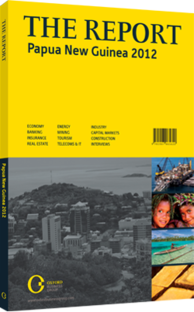OBG talks to Stanley Alphonse, CEO, PNG Ports Corporation (PNG Ports)

Intreview: Stanley Alphonse
What are the plans for rehabilitation and modernisation of Port Moresby Port?
STANLEY ALPHONSE: The PNG network of ports was largely built 25 - 30 years ago, before independence, and has since suffered from serious underinvestment. However, in recent years the regulatory framework under which PNG Ports operates has provided pricing arrangements to rehabilitate the network. Due to the large volume of cargo that flows through these ports, there is particular focus set on Lae and Port Moresby (PoM) given their importance to the economy. PNG Ports recently started a PGK120m ($57.1m) modernisation programme to significantly improve the efficiency and productivity at these two key ports.
Anticipated demand growth makes it clear that the entire port logistics chain, which involves ships, stevedores, transport companies, port operators and shipping agents, needs to become more efficient and increase its productivity, and we are taking a lead in this regard. The development of new container ports in Lae and PoM, incorporating more sophisticated and higher level equipment and systems, is the start of this process. The net result of the new container port developments will be greater berth and storage capacity at both ports and improvements in the logistics process from ship to gate. The upgrade in port operations will require all employees in the port logistics process, not just PNG Ports, to acquire additional skills.
PNG Ports is currently undertaking the required improvements in its operational capability and is exploring options to accelerate this process.
How would the port relocation benefit operations and the marine transport sector?
ALPHONSE: While recognising that there is a significant value to being located in the PoM Central Business District (CBD), PNG Ports has a project under way to relocate away from the downtown city area. This move will dramatically improve the quality of life for residents and users of downtown PoM through the removal heavy industrial transport and traffic congestion. It will also benefit port operations and port users through the development of a more modern, contiguous port facility, making for easier coordination and control and overall efficiency. The new port location will also provide more expansion options than current port site.
Under what circumstances could PNG Ports become a target for privatisation?
ALPHONSE: The issue of full privatisation is largely a political and philosophical decision for the government, PNG Ports’ largest shareholder. What we can say is that we hope to work closely with the private sector to execute PNG Ports’ long-term strategic plans.
Major capital projects that underpin PNG Ports’ strategic direction include the new container terminals at PoM and Lae, the PoM Port relocation project and the development and operation of a new port in Lae.
PNG Ports is of the opinion that aspects of these projects could be delivered through a variety of public-private partnerships (PPP). The company acknowledges that although it is training its core teams in new skills and improving its operating and strategic capability, the projects it is undertaking require large amounts of capital, as well as operational and project delivery expertise. Accordingly, at the appropriate time, PNG Ports will be interested in talking to credible global players in the ports logistics sector to discover ways in which the private sector could get involved.
PNG Ports sees these projects as transformational for its business and, in all likelihood, projects that will drive significant changes in the organisation’s overall strategy, structure and regulatory framework. PNG is on the cusp of fundamental economic growth and societal change, largely triggered by the large ExxonMobil liquefied natural gas project currently under way. It is critical that PNG Ports plays it role and adapts to new strategic ventures. The company’s directors, management and staff are excited to be at the vanguard of the country’s anticipated rapid progress and development.
You have reached the limit of premium articles you can view for free.
Choose from the options below to purchase print or digital editions of our Reports. You can also purchase a website subscription giving you unlimited access to all of our Reports online for 12 months.
If you have already purchased this Report or have a website subscription, please login to continue.

